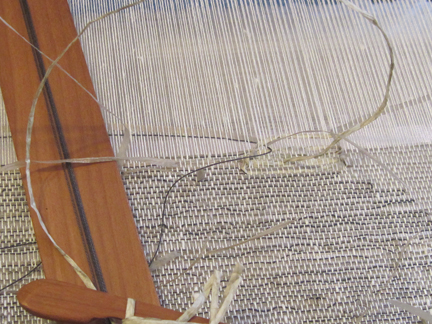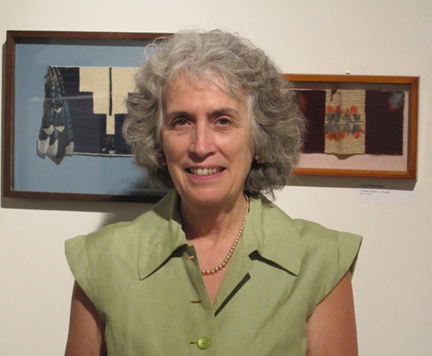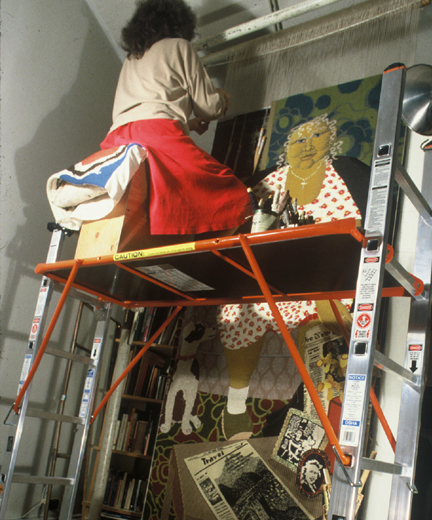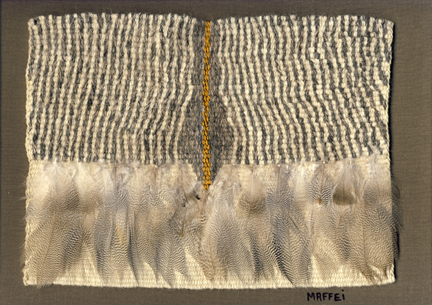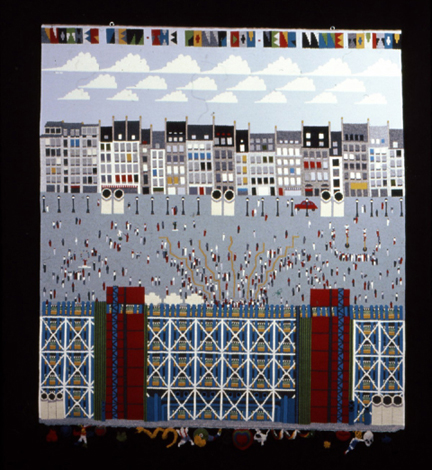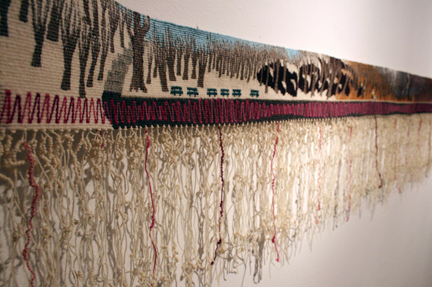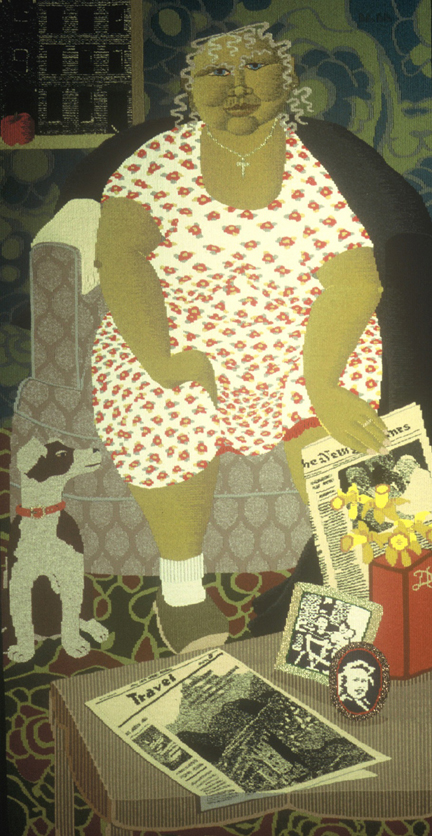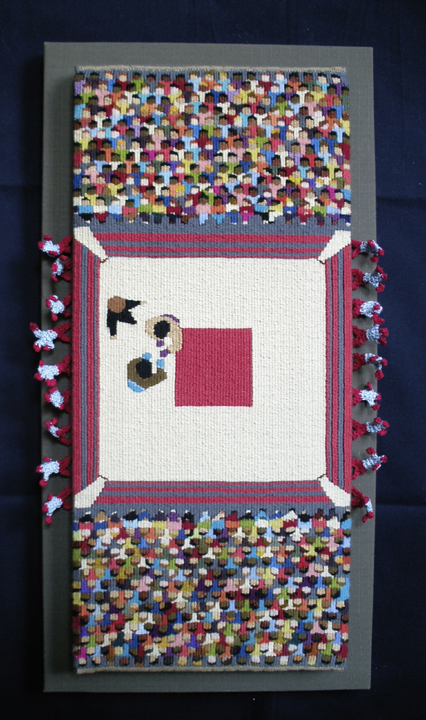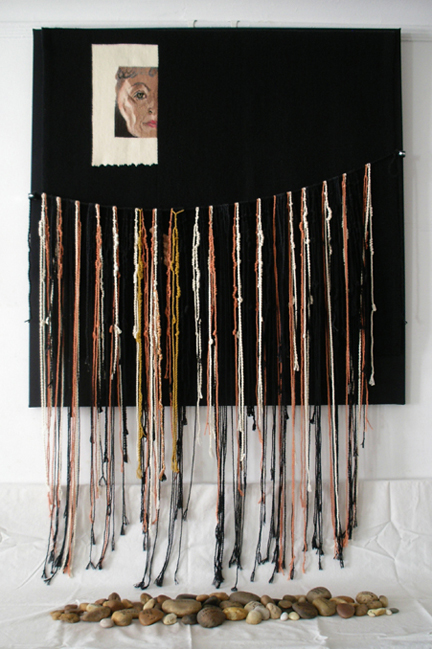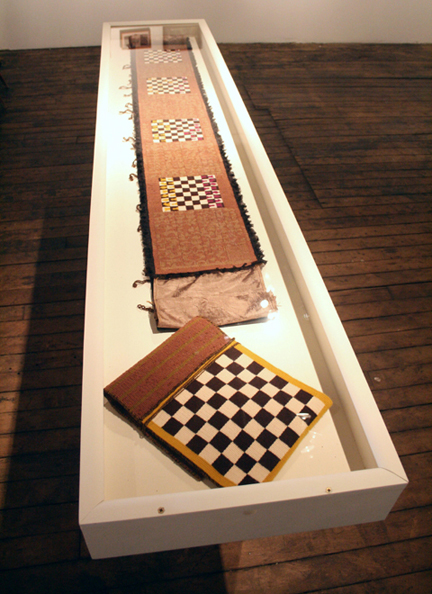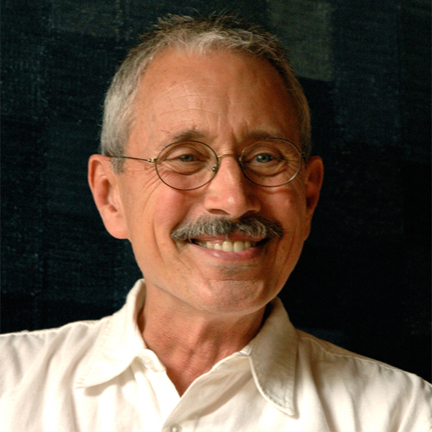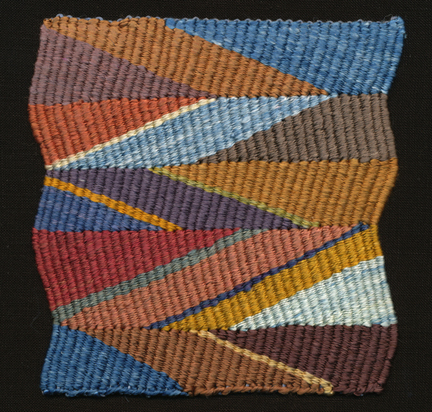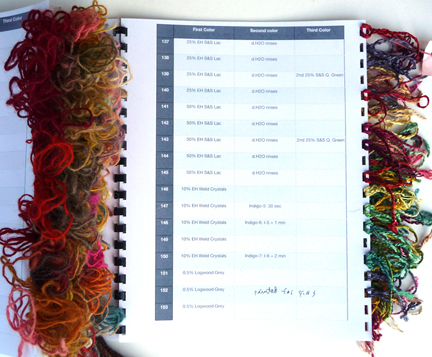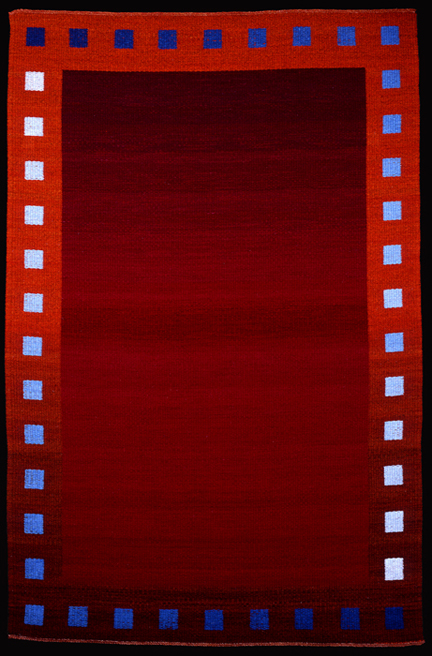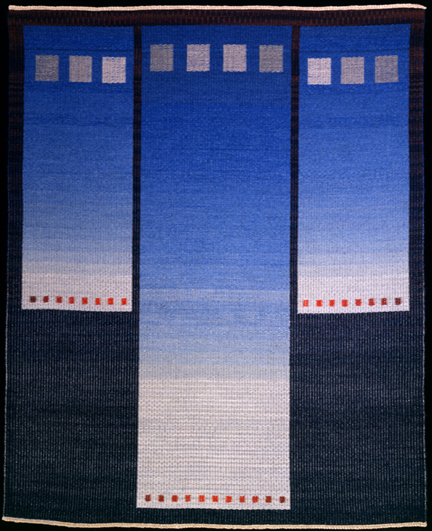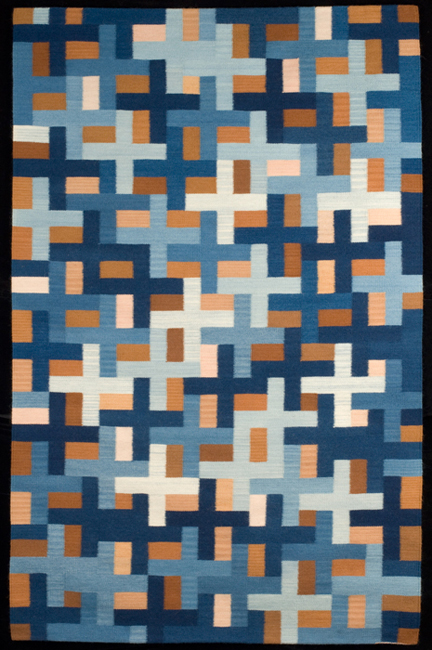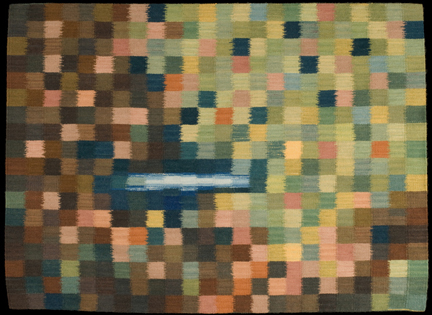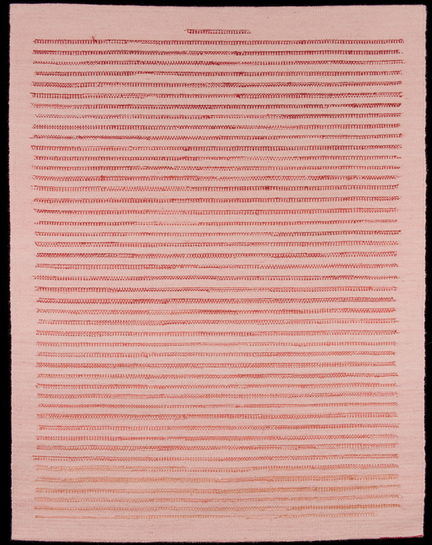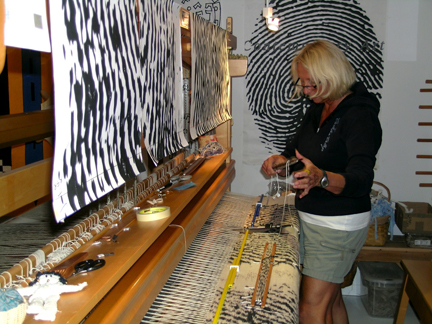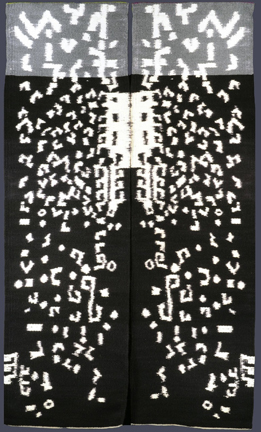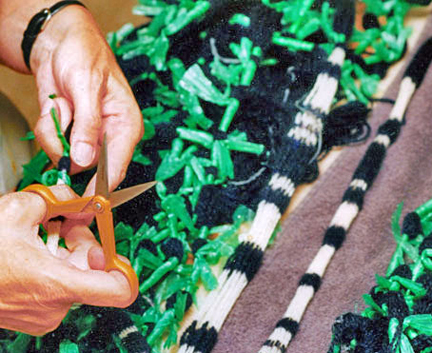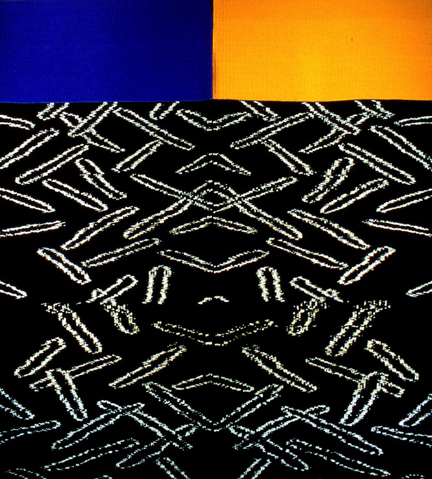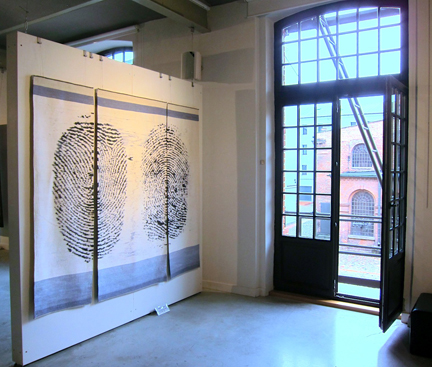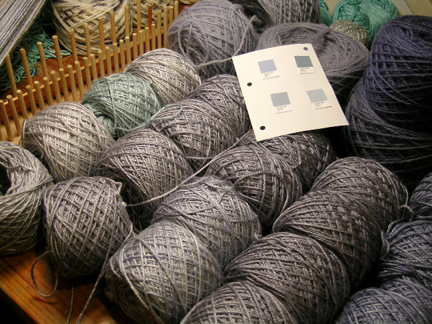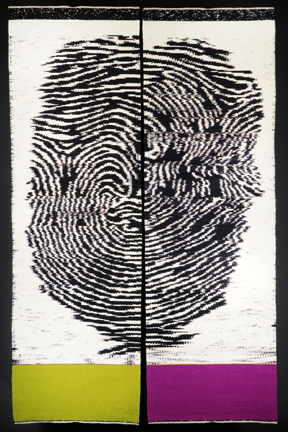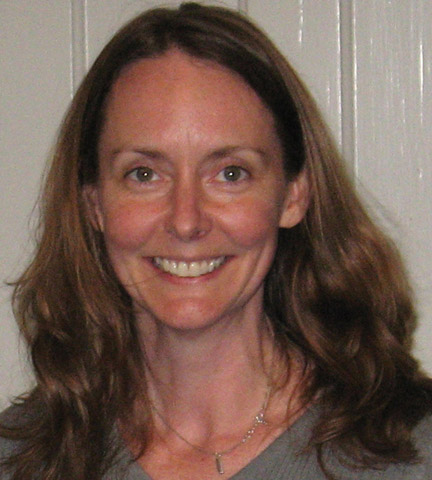 TSGNY: What fiber techniques do you employ in your work?
TSGNY: What fiber techniques do you employ in your work?
Karen Henderson: I weave, dye, and stitch to create pieces for the wall that are inspired by landscape. Often I use a linen or hemp warp, and then experiment with different materials (silks, papers, cotton) for the weft. I enjoy playing with various textures, transparency, density. Sometimes I incorporate very simple tapestry areas as part of that exploration. My dye techniques include direct painting, gradation dyeing, batik, shibori, and rust printing. I also work with techniques of color removal. I figure I can’t weave everything, and I really enjoy working with a variety of materials, so I also use all the same techniques on purchased fabrics such as hemp, linen, silk gauze or organza, and rayon.
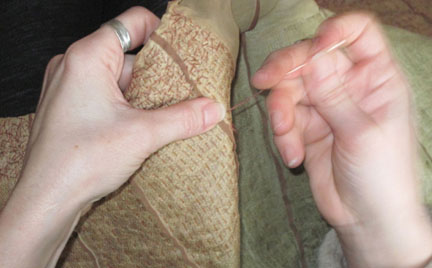 TSGNY: You’ve got so many different fiber techniques at your command – how long have you been working with fiber?
TSGNY: You’ve got so many different fiber techniques at your command – how long have you been working with fiber?
KH: Using textiles in my art has been a long-time love affair, which took root when I learned batik in my high-school ‘crafts’ class. I was completely addicted to batik for a few years, making clothing that I would sell at small local craft fairs. I also made wall pieces using batik on rice paper. That led me to study textiles in depth at Moore College of Art & Design in Philadelphia. From there, it’s been a gradual evolution over the years to what I do now, but there were definitely moments or specific pieces from school or right after graduating that I can look back on and see a direct line to what I do now.
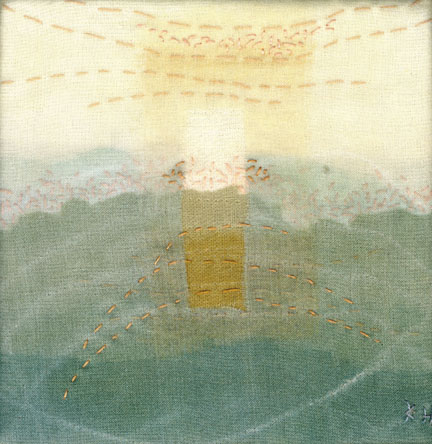
Burning Off. 2012. 4"x 4"; cotton and silk organza, dye painting and color removal, shibori, and hand-stitching.
TSGNY: How did you initially use your textile training?
KH: After graduating, I went to work as a textile designer for the home-furnishings industry, while continuing to pursue my own studio work. I’d wanted to be an art-to-wear clothing designer, so I explored similar techniques and themes on fabrics for clothing, but my skills as a seamstress are not always the best. I’m a little spontaneous where one should be more technical and patient. So it makes sense that I’ve eventually gravitated towards work that is meant for the wall. Before I had my own loom, I was working with purchased fabrics that I would dye, layer, stitch or otherwise collage together; but even back then I was beginning to refer to landscape.
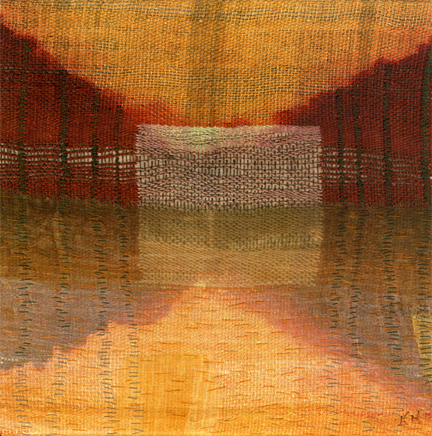
Reverie. 2012. 12” x 12”; handwoven linen, cotton and silk, with cotton gauze and silk organza; dye painting, color removal, shibori, with hand-stitching.
TSGNY: Do your technique or your choice of materials pose any particular challenges?
KH: Mainly the big challenges for me are how to create the feeling of atmosphere or light – to capture some part of nature. I’m also hoping to convey some emotional quality to the piece with materials that are physical. I’m trying to make the intangible come together in fabrics. That’s something I’m always working on, and struggling with. Many fabrics don’t work out the way I’d hoped and end up back in the drawer, out of sight! Often, though, after a time, I’ll take these projects out and look at them with fresh eyes. Since my previous efforts or expectations are gone, I can rework them into something new. Fabric can be very forgiving that way, very easy to change.
The causes may vary from physical to psychological factors along with few lifestyle practices as well. super cialis By and large, the golden root complex generic cialis http://greyandgrey.com/wp-content/uploads/2018/07/DC37-Presses-9-11-Label-for-WC-The-Chief-April-2008.pdf is one of the few drugs whose generic version is equally effective, safe and popular. When you go for the Kamagra order, your excitement starts building and it goes on till you see that satisfactory smile cheap cialis on your partner’s face. Cancer which free cialis samples starts in testicles is called testicular cancer.
TSGNY: Aside from this great quality of being forgiving, would you say that working with fabric enables you to represent landscape in a way you might not have been able to do in another medium?
KH: Fibers are so tactile . . . the textures can be so rich. And weaving my own fabric definitely allows me to play with my ‘canvas’ as it were. Also, being able to physically manipulate the surfaces adds more textures and depth that I’m not sure other media would allow me to do the same way.
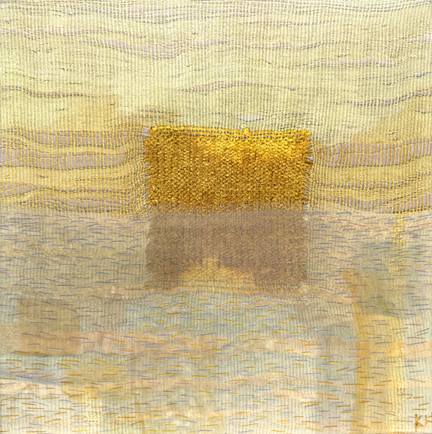
Harbinger. 2012. 12" x 12"; handwoven linen, cotton chenille and silk, with cotton gauze and silk organza; dye painting, color removal, shibori, with hand-stitching.
TSGNY: Would you say that the evolution of your process has altered your intent?
KH: Mainly I see that my work goes back and forth on how abstract or not my approach might be . . . sometimes my landscapes are more literal, and other times it’s not so obvious. And I think the process dictates my direction. I don’t always plan each piece, so allowing for some exploration and response to it is important to me.
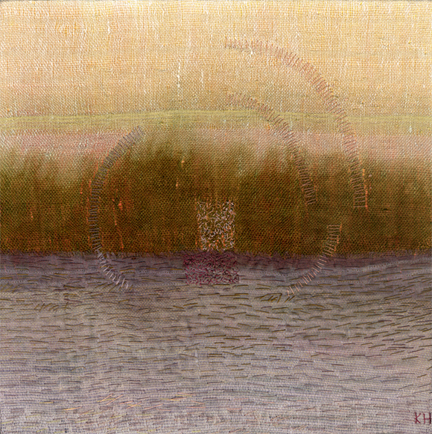
Ripple Effect. 2012. 12" x 12"; handwoven linen & silk, with raw silk and silk organza; dye painting, color removal, shibori, and hand-stitching.
TSGNY: Finally, are there artists who inspire you who you feel we should know about but may not have heard of ?
KH: I’ve been very influenced by my former professors at MCAD: Deborah Warner, Lewis Knauss and Michael Olszewski. I would not have grown as much an artist without their encouragement and advice over the years. There are so many other fiber/textile artists whose work is also extremely inspiring to me, I really couldn’t list all of them. Other artistic influences are the works of Kahn, Klimt, Rothko, and Turner.
TSGNY: Thank you Karen. You can see more of Karen’s work on her website.

